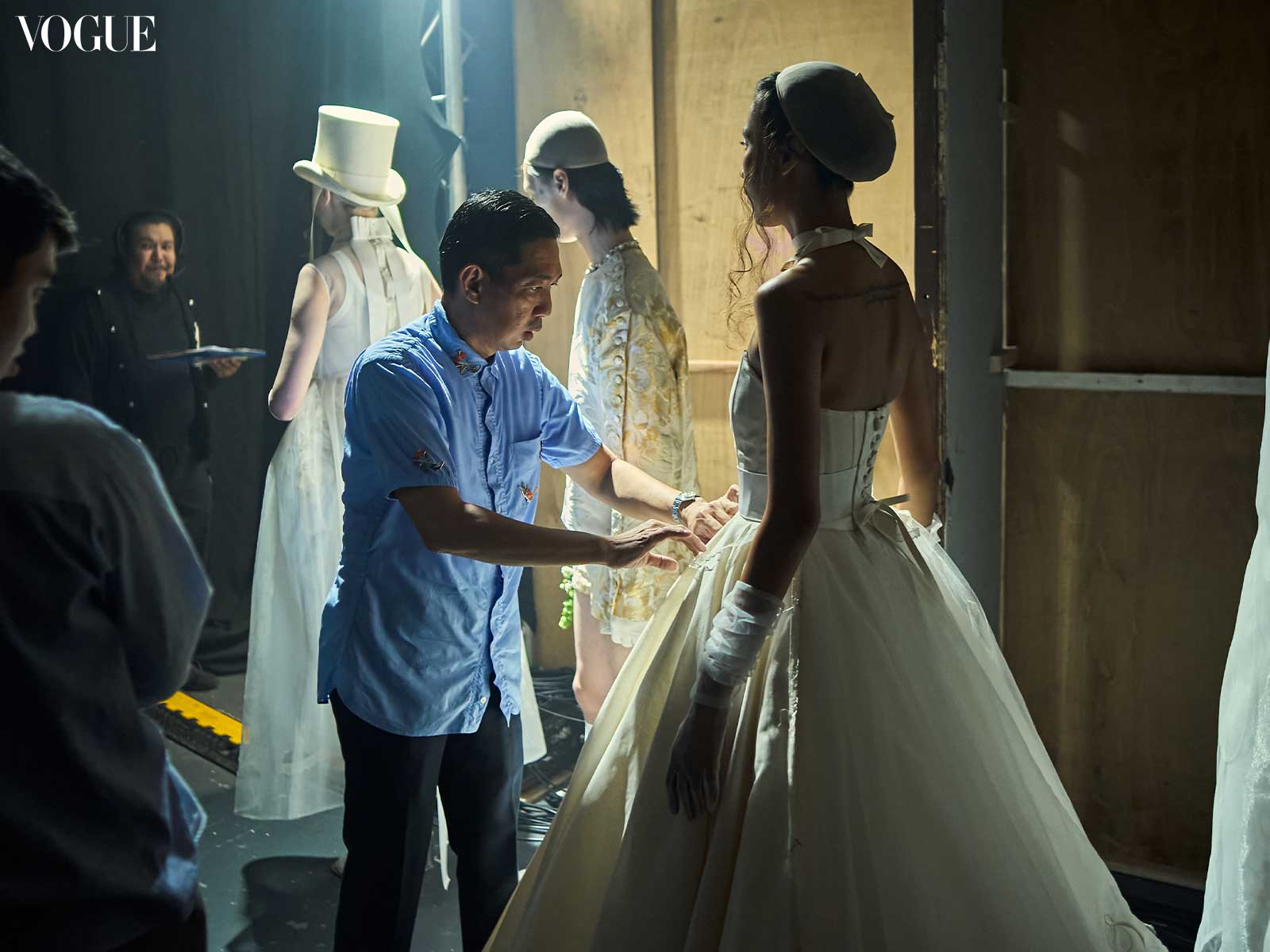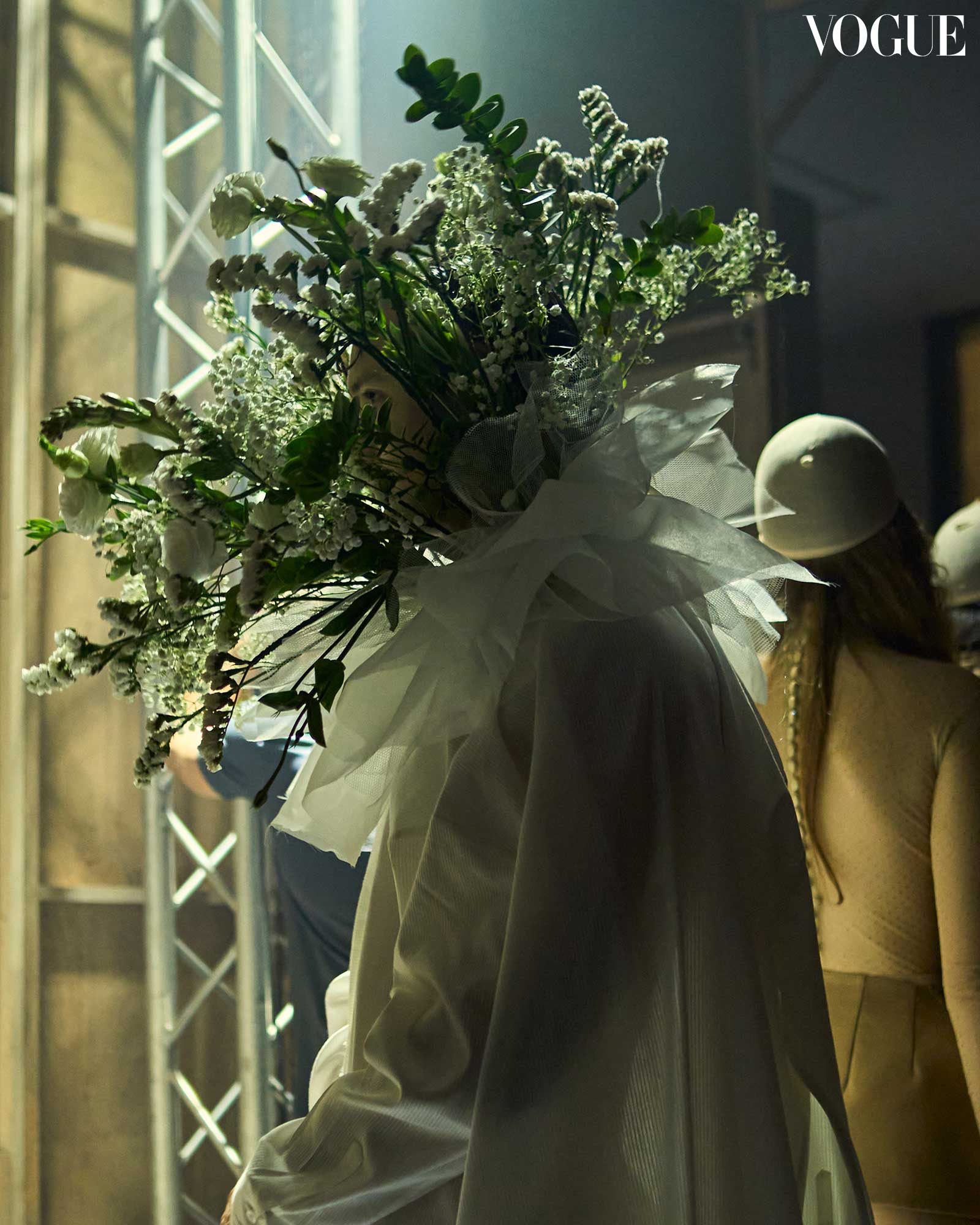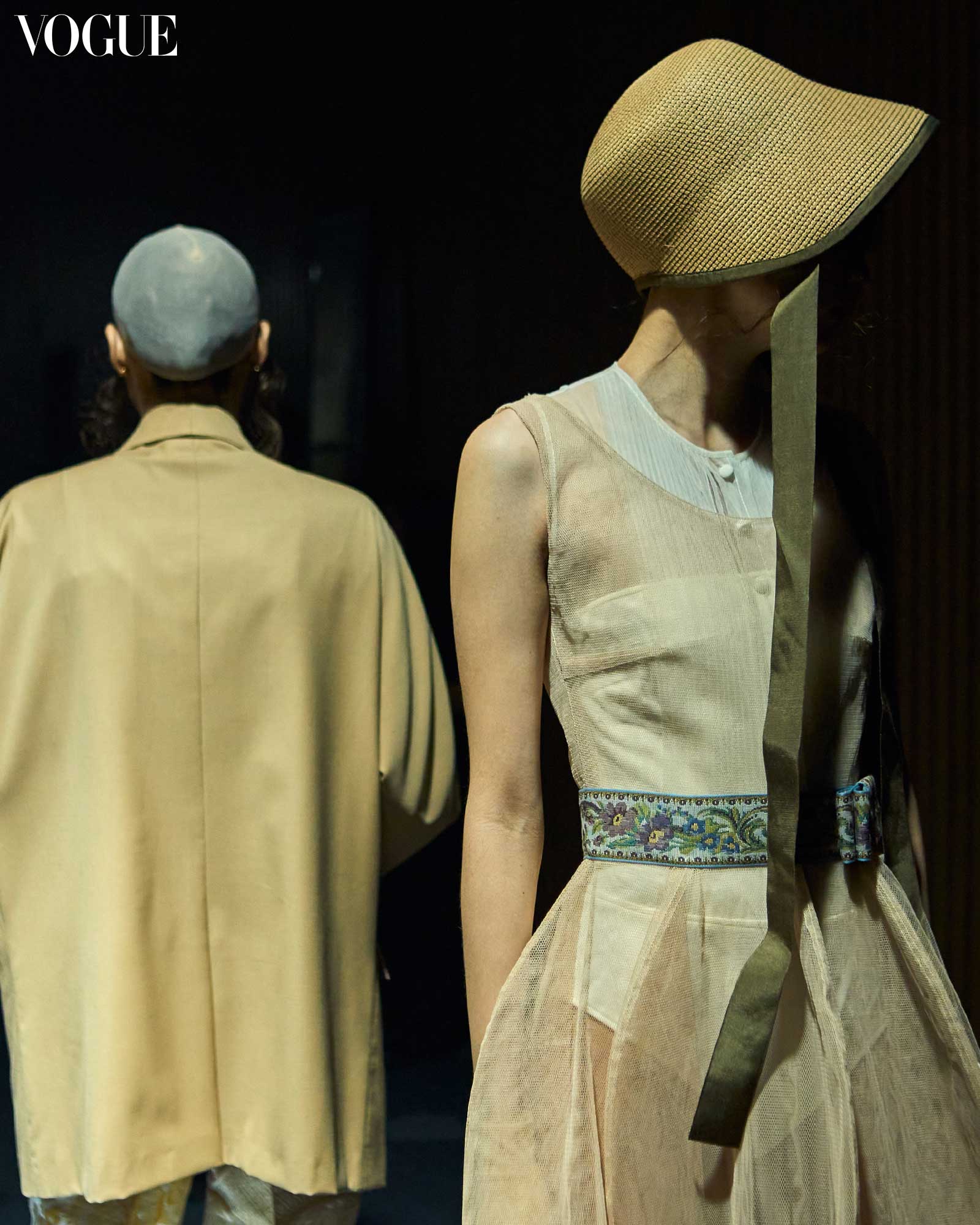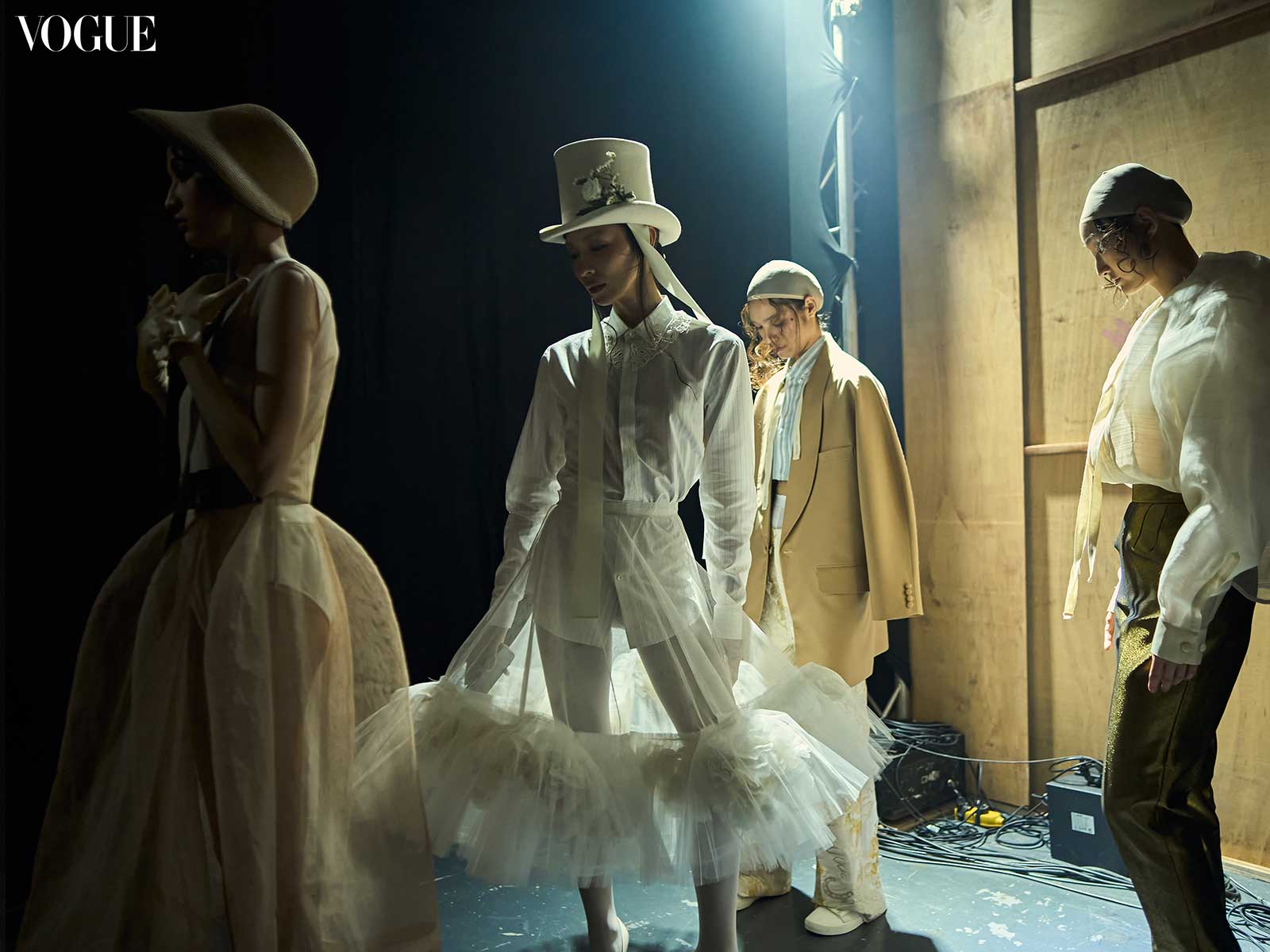Backstage at Joey Samson’s Bench Fashion Week runway show. Photo by Kieran Punay
The homegrown fashion designer presents his newest collection at Bench Fashion Week S/S24, drawing breath from centuries of Filipino history.
“The dressing room is my secret garden,” says fashion designer Joey Samson, as he adds his final touches to his collection mere minutes before the start of his runway show at Bench Fashion Week. For Joey, every garment he creates contains an essence of his soul, which is why it was difficult for him to narrow down the number of looks leading up to his presentation on the runway. “It breaks my heart to edit something, and I feel like if I do edit this look it won’t connect it to the others. I had more than 35 sketches, but I had to decide on 30 looks because I really couldn’t concentrate anymore, and I just kept adding and adding.”
Despite the hectic schedule and the constant construction and deconstruction of fabrics on the cutting room floor, the couturier seemed to be at peace and in his element. His dressing room, whether in his private workshop or in the backstage of a runway show, is a safe haven where ideas flourish and are nurtured.



It is this feeling of tranquility that inspires his entry into Bench Fashion Week, befittingly titled the “Secret Garden” as an homage to the spaces that allow the garment surgeon to tinker with new ideas. As lights began to dim and the final preparations for each look drew to a close, a symphony of violins, pianos, and strings introduced the collection. Bright and airy tones resonated throughout the venue, as a trio clad in all white entered the hallway in skin-tight garments, setting the tone for the silhouettes to follow. From backstage, Joey patiently watched as each of his graceful ensembles began to strut down the runway, with audiences eagerly awaiting what’s next.
The new runway collection features silhouettes that appear as if they were taken directly from the pages of a novel, which in reality is the case. “I love historical books and references, and a good friend of mine lent me a book about 17th century men’s dress patterns. When I started reading the book, there was this [urge] in me to find out the difference as to how to make clothes now compared to how clothes were made before, and that evolved into something like the Secret Garden.”

These subtle injections of history have always been a cornerstone of his work, seen with his signature “cage terno,” and his modern interpretations of Filipiñana throughout his designs for Ternocon. Every silhouette that walked the runway showcased the historical imagery that Samson has been recognized for, with traditional Filipiñana being mended into 17th century codes. For example, a camel-colored suit with shawl lapels is constructed with thick wool, while each of its vents are weaved in local piña fabric.
“It just started with men’s dress patterns, but then it evolved into [the Secret Garden] because I felt like I was limiting myself too much. Considering that it’s historically based, what started as 17th century [patterns] became Baroque, which means oddly-shaped patterns,” says Joey as he describes this unorthodox blend of styles.
Comparatively, classic barongs were spotlighted through different looks from the show. Variations of the barong are either worn as inner layers, as a cropped layering piece, or in extremely elongated, asymmetrical cuts. Drapes were also a recurring garment throughout the collection, enveloping its wearer in a tapestry of ornate patterns highlighted with gold. Headwear added depth to every look, with each model fitted with either maid caps, top hats, bonnets, and ribbons that reflected the show’s historic themes.

Despite the number of layers, the garments both appear and feel light to the touch. This is a result of Joey’s selection of fabrics, with both sheer and translucent textiles that allow for each article of clothing to feel ventilated and breathable. “I know I’m working with very challenging silhouettes, I get that. But it’s just a matter of modifying the [fabric] or using the proper weaving technique. I’d like to think that I am quite successful, because these silhouettes are often very cumbersome and heavy, but I wanted my version to be light, airy, and dreamy which is a good contrast.” Apart from each garment’s fabrics and proportions, the show’s color palette also adds to the lightness of the entire collection. “If you notice it’s been the whites, beiges, cream, and camel, and a bit of texture with the metallic and the brocade,” Joey adds.
As the final ensembles began to walk the halls of the runway, florals became an increasingly recurring motif that paid homage to the collection’s title. What started from white roses taking the place of boutonnières had gradually evolved into bouquets sprouting from collars and beneath dresses, enveloping silhouettes in a garden of its own.
